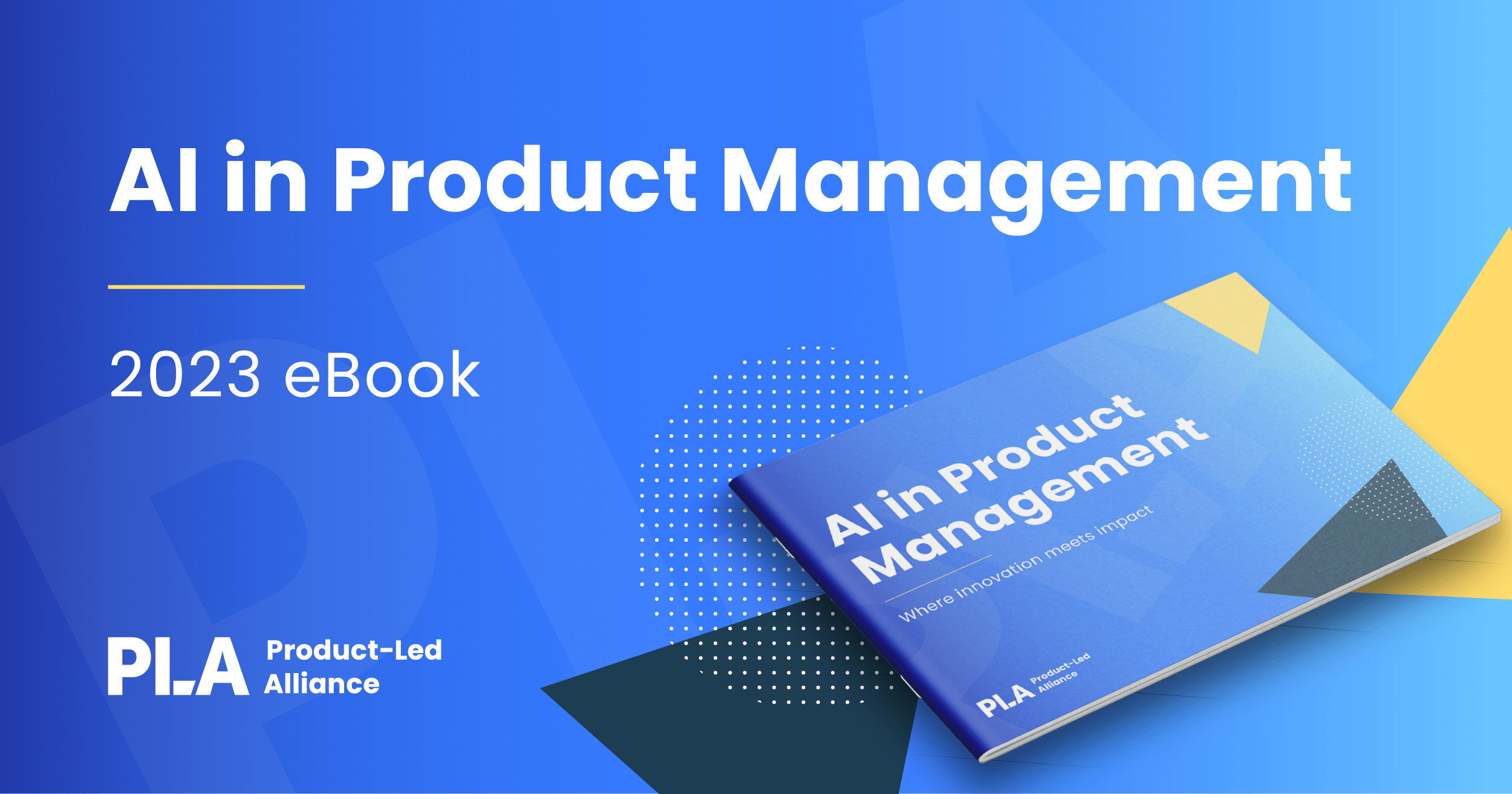Boma Tai-Osagbemi, Associate Director of Product Management at HelloFresh, gave this presentation at the Product-Led Summit Las Vegas.
Good morning, everyone. It's great being the first up here. So we'll be talking about product-led growth insights from unexpected sources. And it's half a keynote and half a rant about things that have kind of annoyed me about products that I have looked at.
And this is based on my experience because I have been a founder. I have worked in health tech and fintech and have been the solutions engineer. And you'll see that a lot of that involves doing lots of product research and trying to find solutions for different problems that you might have internally.
I currently work at HelloFresh, where I lead the global order management teams. Let's get going.
I look for inspiration outside technology, and it's really simple if you think about the notion of product-led growth and product management. It's fairly new in technology, right? The first mention of product management was probably in the 1930s. By P&G, we owe a lot of our theory or knowledge to the folks in marketing. And like business strategy, in technology, product management is fairly new compared to engineering and all the other disciplines that exist in the tech space.
So it gives you an opportunity to take a step back and kind of look around to see if there are other things that we can learn from people who are not in the core technology space. It also gives the opportunity to break out of that groupthink mentality where we're all trying to build the Uber of X but for Y, and stuff like that.
- Pillars of PLG
- Where to seek inspiration
- Getting over the hump
- Loss aversion
- The flow of friction
- We all scream for ice cream
- Perfume for days
- Data me this
- AI to the rescue
- 10 years younger
- Crossing the Chasm
- DIY
- Bake that cake
Pillars of PLG
So what's product-led growth anyway? Depending on who you ask, who you talk to, and how much coffee or wine they've had, you get different answers to it. It's built around four pillars:
- Product
- Distribution
- Feedback
- Monetization.
I have made it a continuous cycle because it starts and ends nowhere. You have to go round and round to deliver value and to be able to build a product that's defensible in the market.
But what's the biggest and most important idea in product-led growth? It's really simple. If I came up here with a cupcake, and I said to you, this is the world's tastiest cupcake, what would be the first question you ask? How would I know? You'd like to taste it, and you'd like to know what's in it. But for some reason, in technology, we tend to forget that idea every now and then. We try to do other things to get customers without actually getting them to taste the cupcake or products.
Your goal as a product manager, as someone who runs a business, would be to reduce the distance between when a customer is aware of your products and when they try out your product. This is a very old idea. It's a scene that goes back to the 1700s or so. So product idea and product-led growth is a fairly old idea. And there's a lot to learn still learn from it.
Where to seek inspiration
Now I suggest other areas to look for productive-led growth and inspirations for things that we can do in our commoditized and semi-commoditized markets. It asks the simple question of how do I differentiate something that looks like everything else? And markets that face this dilemma tend to put their products at the front of the experience because they have no other avenue or no other opportunity.
I'd suggest we look at food and beverage, look at retail, look at the automobile, and cosmetics industries, and see how they drive growth. Right now, this is the generic marketing funnel, conversion funnel; call it whatever you want. The question is, what parts does a great product manager play in this funnel?
So you start from awareness all the way to adoption and reference. And as a product manager, your primary goal, I'd argue, should be to get people to adoption. Right now, all the way along this funnel, there are lots of fun metrics that we can measure. But I'll argue that most of them are useless. If they don't drive adoption, there's no point.
Getting over the hump
I have divided this into three parts. So broadly, awareness, interest evaluation, but let's call it discovery. And then, trial. I have made it a black box and have called it the chasm at this point in time. And then you have conversion and retention. And the hardest thing to do is to get a prospect or a customer over that hump. And everything you do should be to drive people over that hump.
Now, which part does a great product manager play in this? People might argue that discovery is the remit of the product marketers and the folks next door. But I argue that as a product manager, you want to be part of every part of this conversion funnel and realize how the features that you create affect the whole cycle.
So you think about awareness from how you conduct market research. It helps you define the metrics you should be measuring and the kinds of features that you should deploy to defend your product in the market, all the way to trial adoption, how you set up your pricing, your distribution, and all of that.

Loss aversion
Now, I'd like to share a couple of large and overarching ideas around product-led growth. One is the notion of loss aversion. This wasn't created by me. A much smarter guy who won the Nobel Prize for Economics came up with this. It basically argues that people are more motivated by, or they're more afraid of, the risk involved in losing the thing than the incremental gain in risk.
Understand that every product that you create and every customer you're trying to drive through your conversion funnel is going through this, and they have something to lose. And depending on where you are, for example, the B2B customers, you might think, what does an IT manager have to lose? You're proposing a solution to a market. You have your proposal solution internally, and you essentially have your reputation, so you're risking your job.
If an IT manager goes to propose a solution that kind of tanks, well, his appraisal might not look too great in the next quarter. If you look at the SaaS scenario, where it's a single-person founder, he's risking his money. It might be his livelihood - he's putting his credit card in there, right? And he's taking a risk every time he's researching your product and signing up.
As a product person, you have to always think about it from that point of view. What's my customer risking? Or what's the product of the prospect risking? And how can I help them overcome that?
The flow of friction
This is going to show that I’m a bit of a physics nerd, but follow me for a second here. There’s this idea of laminar flow and gravity. Water flows smoothly. That's laminar flow, right? When the water is disturbed, then you have turbulent flow, and it flows slower. I'd argue that as a product person, as a business person, your primary goal is to ensure that laminar flow happens through your product.
Think about all the experiences and all the touch points and create those frictionless customer experiences, even if it might cause some churn.
Now, gravity is something that we tend to lean towards as productive people, as business people, because we try to suck customers in and keep them. And if you look at what's the most aggressive example of gravity, it's a black hole.
You'd find out, you see it in checkout funnels, or when you're trying to cancel a product you own or cancel a trial, it's hard because the product manager has this vanity metric where he's trying to trap as many people as he can.
People have bought your product for various reasons, right? So if you consider a SaaS type product, you might have a product where there's a co-founder. If they're running out of money, they have to pivot, and they have to re-strategize. And for a certain time, they have to step out as a customer.
But you have to also ensure that the experience is pleasurable for customers. Because when they start the new business, they'll come back. But if you somehow smartly conned them out of an extra month of subscription, well, you've lost a customer now and in the future.
So I'd argue that when you're developing your product experiences, think about it in those two buckets. Is this laminar flow? Or am I trying to suck people in and keep them from escaping this trap that I have created?
We all scream for ice cream
Let's talk about a couple of examples. And I'll spend most of the time talking about examples in the discovery phase. So one is Ben and Jerry's. Ben and Jerry's is a large ice cream company that everybody knows. They did about a billion dollars last year in revenue, and they're owned by P&G. But this was Ben and Jerry's in 1979.
They were around for about a year then. And they came up with a very interesting idea at that point in time. What they did was every once a year, they sample their products to the customers. And it's something that people in the consumer packaged goods industry know very well. The taste of the pudding is in the eating.
When you're setting up your pricing, it's better to give a trial than a money-back guarantee. Because if you go back, you need to think about what this person stands to lose, what are they risking? Do you necessarily have to take the person's credit card for them to log in and experience your platform? If yes, your goal is to get them all the way through trial and adoption. So think about that as you implement experiences in your products.

Perfume for days
Here's another example. There is a very expensive bottle of perfume. I have no idea why anybody would buy a $1,500 bottle of perfume, but hey, it exists, right? How do I describe the taste of rose to you? It's the most awesome rose perfume in the world.
However, this is a $1,500 bottle, so what the company has done is they have created a 10 mL bottle instead of a 50 mL budget. That's 100 bucks, which is still arguably a steep price, but hey, it's an avenue for a customer to sample that product.
Here's how the customer experience for this product would work. You go into the store, pick one off the shelf, and try it out on the card. Maybe you like it. Maybe they give you a small tiny 1 mL sample. You take it home; you wear it for a day or two. You come back, and you buy a 10 mL bottle. You try that out and see how many compliments you get. And then you take the dive to buy the $1,500 bottle.
For those of us who work in B2B, think about the experiences that we create for our customers. You go to a couple of B2B sites, and you look at the pricing table, and you just see enterprise and nothing else. What does that mean? There's no price to it. Think about how you can front-load value, get your customer to try out your product, and bottle an end-to-end experience for the customer.
What that means is to think about how you can scale back your offering to the smallest possible size and think of it as what will drive the customer over the hump of trial to adoption. Create those little bits of experiences that your customers can explore and try out.
Data me this
For example, you're a B2B product, and you've created the world's most awesome visualization software. Here's how I propose you bottle that experience. Create a small sample data set that your customers can try out so they don't have to worry about loading stuff, and you’ve created a curated experience.
Here's the data set of people who attended the product-led conference, and here's their height distributions or whatever. Now, here are a couple of visualizations that you can create from this and almost guide the customer through that experience. And then they can actually try out your product as opposed to slapping them with a 30-day trial or whatever and somehow hope they go clean their own data.
If you think about it as a data product, one of the risks that the person is taking is data safety. You need to think about how you can create a laminar flow through your experiences and create really small end-to-end experiences that a customer can try out.
AI to the rescue
Here's another simple example. And this really involves removing friction, right? For those of us who wear glasses, you would know that there are a couple of decisions you have to make. One, you have to choose the right frames. Choosing that is a very annoying process because you'd have to go into the store and spend an hour trying it on and all of that. And if you have a significant order, then you're also doing things on the phone to ensure that you also look good and you get the approval of your partner.
What's happening right now is a couple of companies have been clever enough to try to create a virtual trial-out guide. You take a picture with your webcam, and it does 3D. What's it called, augmented reality? And it gets you to try out a couple of frames and passes you through a quiz. It reduces the time required to actually make that choice.
Think about how do I implement stuff like this within my own products. One way to also think about it is it might be something as simple as a B2B solution, or even a B2C solution, or SaaS solution. A way to guide a customer to a solution that you need or you want them to find is to implement a quiz. Get them to fill out some information. And then suggest to them here are the top five features that I think that you might need. And that's a way to help a customer through that experience.
Now, this sounds really simple, and everybody does this, and we all know about it. But here's an example I stumbled upon last week or two weeks ago. So I'm on LinkedIn minding my own business. And then I see a thing pop up, and it says, “Get an AI-generated headshot off your regular selfies”. Everybody has a bunch of selfies, but not everybody has nice headshots. So I was like, oh, cool. Let's try this out.
So I go to the website. And here's what I see. It gives me the marketing spin and shows me examples. And here's the parts that I found really interesting, no matter the number of examples that you show me, I don't care. Would it work for me? That's really the answer that I want.
So I go to the signup and pricing, and then I'm hit with the fact it’s $99. But it's discounted to $49. And for $49, you get 300 headshots. I'd argue that nobody on planet Earth needs 300 Professional headshots, nobody. And here, they have offered me 300 Headshots for $49. But what do I really need? I need one headshot to test out their solution.
So I'd argue that they could have offered me one free headshot and even prevented me from downloading it. But I'd see it, and be like, oh, yeah, this dashing guy looks like me, right? And I'll sign up.
Think about how can we bottle up this experience, shrink it, and offer 30 headshots at $4 or two headshots at $5. I'd argue that they'd have way better conversion in terms of driving people through that experience. So this is a really simple idea, but somehow, we're not all implementing it.
10 years younger
Now, here's an example of a situation where it was implemented very beautifully. And I'll give you some backstory. If you look at these pictures of me - and yes, I'm still very handsome - I have an 11-month-old, and she's about she's going to be about 12 months in a couple of weeks.
I'm at that point where I'm thinking about, oh, what did I look like at that age? So I call my parents, and they send me pictures of myself from that time, and of course, it's pixelated. It's really bad. And I said to myself, there must be some solution that uses all of the AI wizardry that we have right now that could make this picture much better.
So I go Googling, and I find Remedy.ai. And I didn't know them before that. But what I saw was awesome. They didn't even require me to log in. There's a page that you go to, and it says choose the file, and you upload the file. And it does its magic on it. And only then does it even require an email or require you to log in.
So at this point, I have not exchanged any information. I want to know if this works at all. And that's that's the goal I had at this time. then it shows me the picture, which I think is much better. Less pixelated, however, with two watermarks. But guess what, I also didn't care at that point in time because they had taken me over that hump where I was afraid.
So it's watermarked, but I pay, and they take out the watermark. What they have done essentially is they have shown me value. And they have helped me experience their products in a very real way.
They didn't waste their time writing long marketing jargon and showing me examples of people that they've done this for. And that's something really powerful that we should think about when we're creating our experiences.

Crossing the Chasm
I have two more ideas here. One is in the idea of crossing the Crossing the Chasm. Think of leverage as a lead side quest. If you play games, you'd be very familiar with the idea of a side quest.
Games have main plots you're driving towards, but then there's little branches of the road where you can go create your own experience - try out new and different things that don't necessarily affect the overall gameplay.
Think about it this way. I was in Staples the other day. And I saw a Sharpie product, and I thought, wow, this is actually quite brilliant. So what Sharpie has done is they try to get you to buy pens. However, they want me to try out the pen because, like most other things, writing is all about how it feels, how the ink flows, and all of that.
So they have created a crossword puzzle on top of that display and put the pens right below it. And no instruction is required. You walk up to it; you look at it, think, oh, crossword puzzle. Here's a word, you find a pen that maybe you want to buy, you circle a word, and you feel good. And then you maybe buy a pen.
So here's a really good example of how you can leverage side quests to drive production trial. Think about it in the example I gave about pre-packaging some data for a customer to try out your visualization products.
Final two final ideas I'd like to share with you is the notion that efforts plus your products create love. And the implications of this are far and run very deep. And there are two large case studies.
DIY
The first is IKEA. There's a lot of talk about the IKEA effect. It's essentially a psychological predisposition to love something that you put together or that you built more than something that you didn't. There's research that shows that people who put together Ikea furniture - you know, that wobbly table or wobbly chair you have at home that you put together - somehow are willing to pay more than the already assembled form of it.
If you go online, you'd see lots and lots of DIY blogs that show you how to take Ikea furniture and turn it into something else. And people love it because they have built it. So a part of their self-worth and self-esteem is invested in that process.
I'd say, in developing your product experience, think about it that way. How can you allow users to customize the features that they want in your product? Typically, you would have pricing that's basic, expert, and enterprise, and it goes from worst to best. However, I’d argue that if you were solving a SaaS type solution, maybe look at pricing differently.
Price is based on the number of features. Let customers actually choose the features. So 3 modules, 5 modules, 10 modules to actually let a customer put their stuff together. That's why they have created their own solution. And they'll fall in love with it because they had the choice.
Think about it even in a B2B scenario. An IT manager is able to customize perfectly the solution in the way that he wants. Part of his self-esteem has now evolved in what has been created. And he will be your champion in his organization. So you just created a new brand ambassador for yourself.
Bake that cake
The second and final example I'd like to give is that of General Mills. In the 1950s, I think 1952 specifically, Betty Crocker created a cake mix. It had one simple solution and one simple instruction, just add water. And that was it.
And you think about it, that's awesome. However, it failed miserably. Why did it fail? Because it didn't involve effort. Mothers didn't feel like they were bakers anymore. They didn't need to do anything. They felt guilt. So General Mills interviewed customers, and customers told them that, and what the company did was release a new iteration of their product.
The new instruction was to add eggs and water, and it seems like a really basic idea. But somehow, because now they've added eggs, people are cooks. They're caring for their families. They're putting love into what they're baking, and the product took off.
That's another example of how you can allow people to customize their experiences and help them get over that chasm and to adoption in your product funnel. I hope that gives you some external perspective on some product-led growth ideas that you can implement in your tech solutions today. Thank you.




 Follow us on LinkedIn
Follow us on LinkedIn




